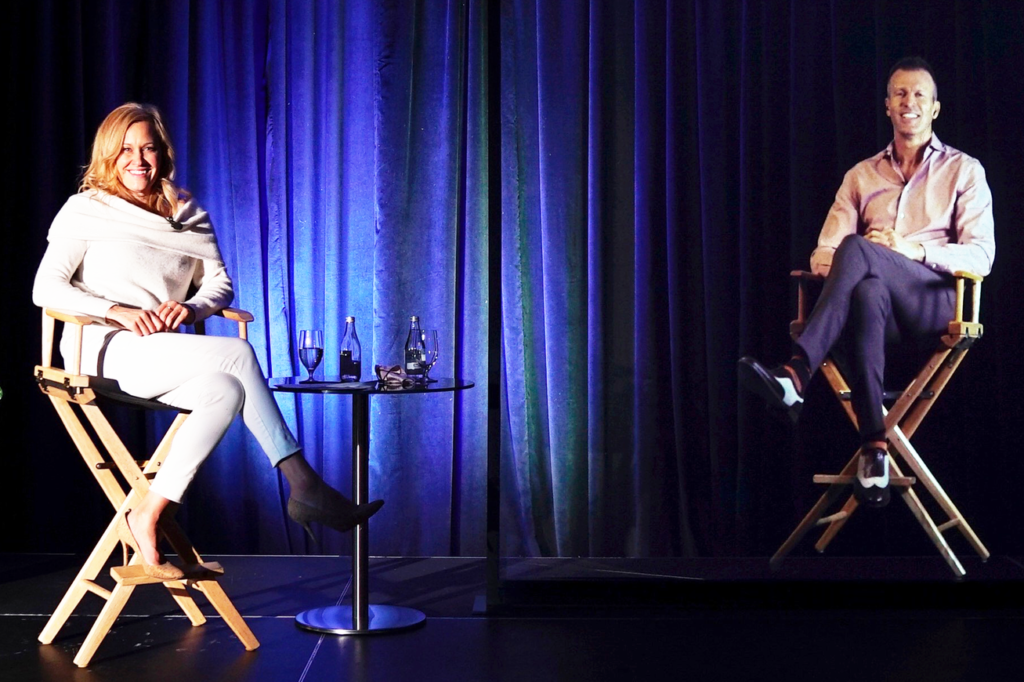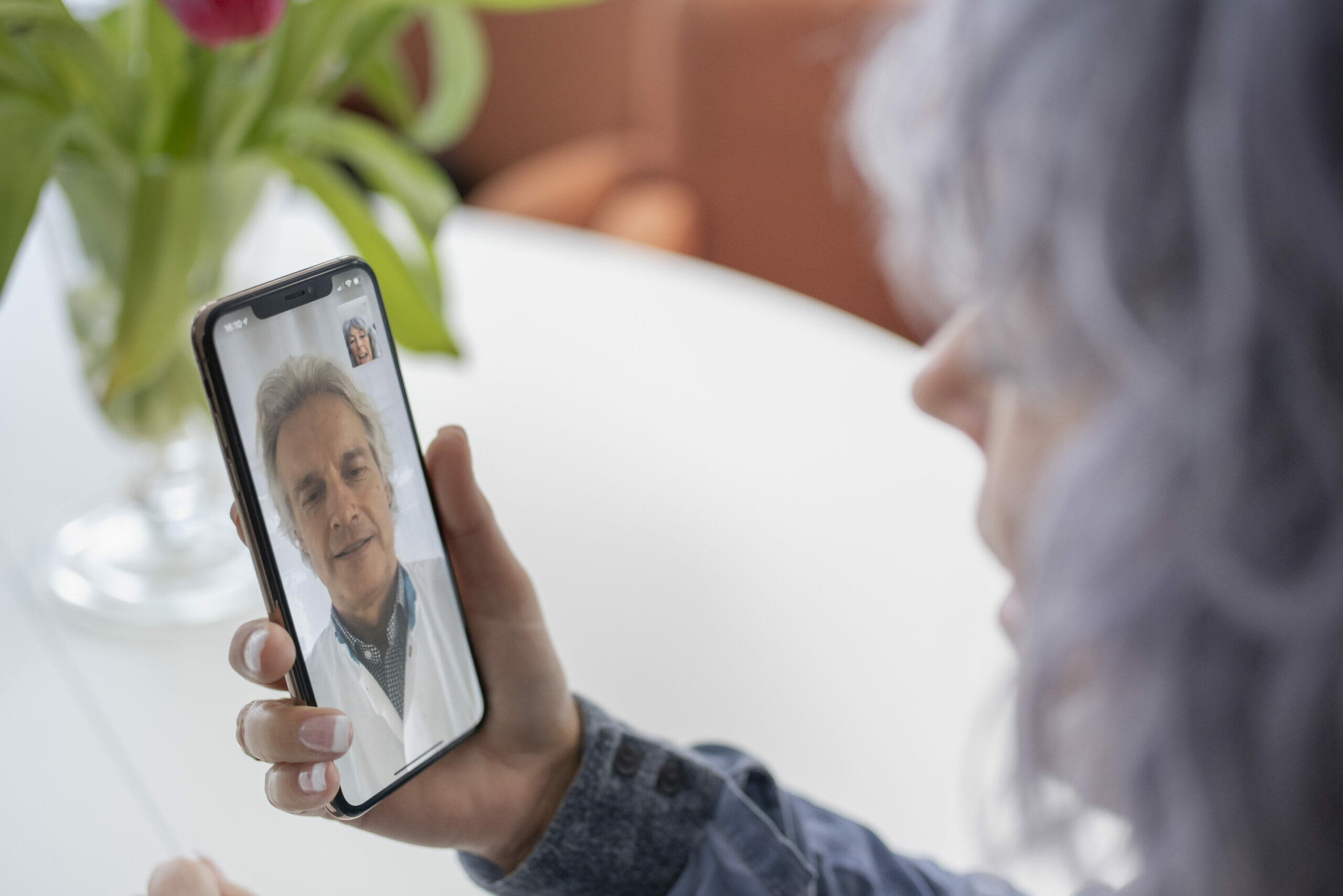The rise of holograms in education

Ever since we watched a pocket-sized Princess Leia tell Obi-Wan Kenobi that he is her only hope, we – or Star Wars fans at least – have been enchanted by the magic of holograms. Since then, the likes of Elvis Presley and Tupac Shakur have been brought back to “life” as captivating illusions that trick our brains into thinking we are looking at the real thing on stage.
While academics may not have the moves or charisma of a digital 3D Elvis, there’s still an undeniable thrill when they’re beamed live into lecture halls from thousands of miles away. It’s nothing like watching a flat screen or a face on the dead eyes of a Zoom call. You can make eye contact, you can have a face-to-face feel to the encounter, a sense that they are magically there.
To really understand their impact, you need to see them in the flesh, says Larry O’Reilly, chief executive of ARHT Media, leaders in hologram technology. “They’re so lifelike, you can’t look away,” he says. “You see the whole person, you get the full body language in a way you can’t on a [flat] screen.” His company has helped beam in academics – and a few celebrities – from around the world, from Hong Kong to New York to the South Pacific islands. With a little helping hand from tech, research scientists from Australia, Greece and Germany appeared on stage together in holographic form at a virtual European conference last year.
But beyond marvelling at the technical wizardry, are holograms actually any use in education? “Feedback shows higher engagement – but most importantly better retention of content when you present holographically,” says O’Reilly – a statement based on extensive feedback from corporate clients. But do they have the edge over, say, videoconferencing and other cheaper and more convenient online communications which have soared during the pandemic?
This is what a team at Imperial College London is trying to find out. It’s invested in equipment from ARHT Media to experiment with lifesize holograms, who are able to chat live to a real audience. “We were the guinea pigs,” says Andrew Parry, head of media at Imperial’s Edtech Lab. “The interaction is key.”
So convincing is the tech, your brain tricks you into believing you are looking at the real thing – but holograms work best with a live audience, so research has been put on hold by the pandemic. This is the same tech that’s been used to bring award ceremonies to life and beam in numerous presenters to academic conferences from around the world. Experts have taught doctors about medicines and vaccines this way.

Early research at Imperial has shown – of course – that students are highly engaged and enjoy better interaction when watching a hologram. While there’s an undeniable novelty factor, will students learn better in the longer term? “We know a sense of presence is important,” says Dr Nai Li, a senior educational researcher in Imperial’s Edtech Lab. She wants to dig deeper into the enthusiasm of students during their first holographic lectures.
“It can give a sense of connection,” says Matthew Ramirez, Future Senior Innovation Developer at Jisc, a technology agency for higher education. “Holograms are persuasive – but you need facilities and the ability to scale the technology.”
So how do these projections work?
An individual is lit brightly in a studio – this could be down the road or the other side of the world. A camera is placed a few metres away to record movements while a ceiling microphone captures speech, and these are transmitted via bespoke software similar to that used in commercial streaming. With control over every audio and video stream, ARHT Media’s tech runs as a closed network, allowing sharing of other video and audio streams, meaning subjects from elsewhere can also be included.
At the presentation end, a powerful short-throw projector casts a bright, sharp image onto a discrete screen made from a foldable gauze-like material stretched over a frame. Transparent and coated with highly reflective paint, it produces the illusion of a real person in the darkness. That individual can communicate with their live audience, who are transmitted back on a large screen – with just 0.3 seconds of delay. Imperial was able to host a live panel event in London with two guests from Los Angeles and New York, beamed onto the stage alongside other panellists. “The interaction is the magical element – our presentation got a lot of attention,” says Parry.
To avoid the hassle of rigging up a screen and background to receive a hologram, ARHT Media has created a mobile backdrop on wheels. Called the ‘holopod’, it can be wheeled on and off as required. “Having it set up and ready to go makes it a much more convenient technology,” says O’Reilly.
A couple of Singapore-based universities are also beginning to use the technology. “Our main educational clients are business schools and medical schools,” says O’Reilly. “They can interact virtually in real time.” Late last year half a dozen orders for ARHT Media’s tech came in from Chinese universities, and another 10 are in the pipeline.
If you can use technology to make students feel they are having some added benefit, such as more engaging ways of presenting information, that could become your unique selling point
But will more cash-strapped universities invest in tech whose value is still being road tested and which requires studios, technical crew and a live audience? In the longer term, the potential to stream prestigious lecturers in from around the world is tempting. While the process isn’t carbon free, it certainly saves unnecessary flights – attractive for institutions concerned about their environmental footprint.
There are glitches, though. For example, if you’re sat too far to the side of a hologram, or the background is incorrectly lit, it destroys the illusion, and with that goes the potential benefits.
There is space though, Ramirez says, for more imagination in lecture halls – though this does rather worry some traditionalists who enjoy the ‘stand and deliver’ lecture format. As ever, entertainment industries are ahead of the game – and the education sector could piggyback on what the visual effects sector has learned. Actors have been interacting with computer-generated sets for years, and these could also be used behind a holographic presence on stage. They could then interact with a backdrop of graphics or digital props, much like a weather presenter explaining turbulence and storms with the aid of interactive isobars and satellite pictures.
“If you can use technology to make students feel they are having some added benefit, such as more engaging ways of presenting information, that could become your unique selling point,” says Ramirez. “Immersive tech will filter into academia and they’ll see already what works and what doesn’t.
“It’s a leap of technical faith. Not every lecturer would be comfortable – but having that added level of engagement to what has been a traditionally passive exchange would have real benefits.”
There is a lot to be said for the element of “presence”, says Michael Cowling, Associate Professor of Information and Communication Technology at Central Queensland University in Australia. Virtual events in the academic world have been relatively dismal affairs this year, Cowling says, and he loves lecturing in person – but only if the students can interact. “Learning is social – at least a holographic teacher can be collaborative,” he says. “But I’m not convinced there is a large pedagogical advantage beyond engagement.”
Cowling sees more value in the use of augmented reality, so long as they are used in the right context. Here too universities are also experimenting, mostly in medical and engineering subjects. Imperial is using holograms delivered through headsets to simulate medical procedures to help train future clinicians.
At present, hologram technology isn’t portable enough to become mainstream. “It’s not a plug-in-and-play solution that the lecturer can just walk in and switch on,” says Parry. “You need someone to come in and help set up a studio. But I don’t think it’s pie in the sky that at some point in the future it will become standard technology.”



